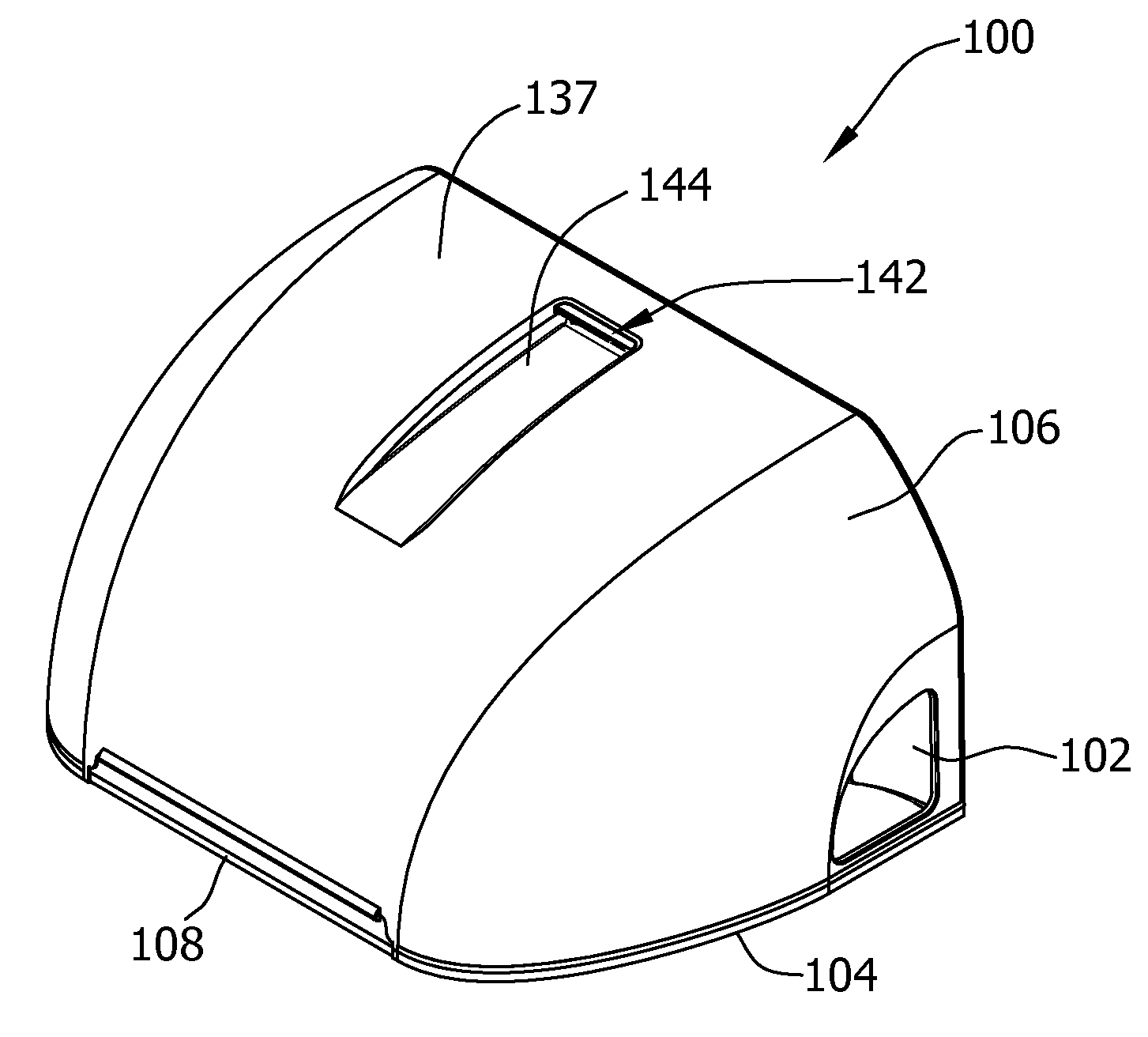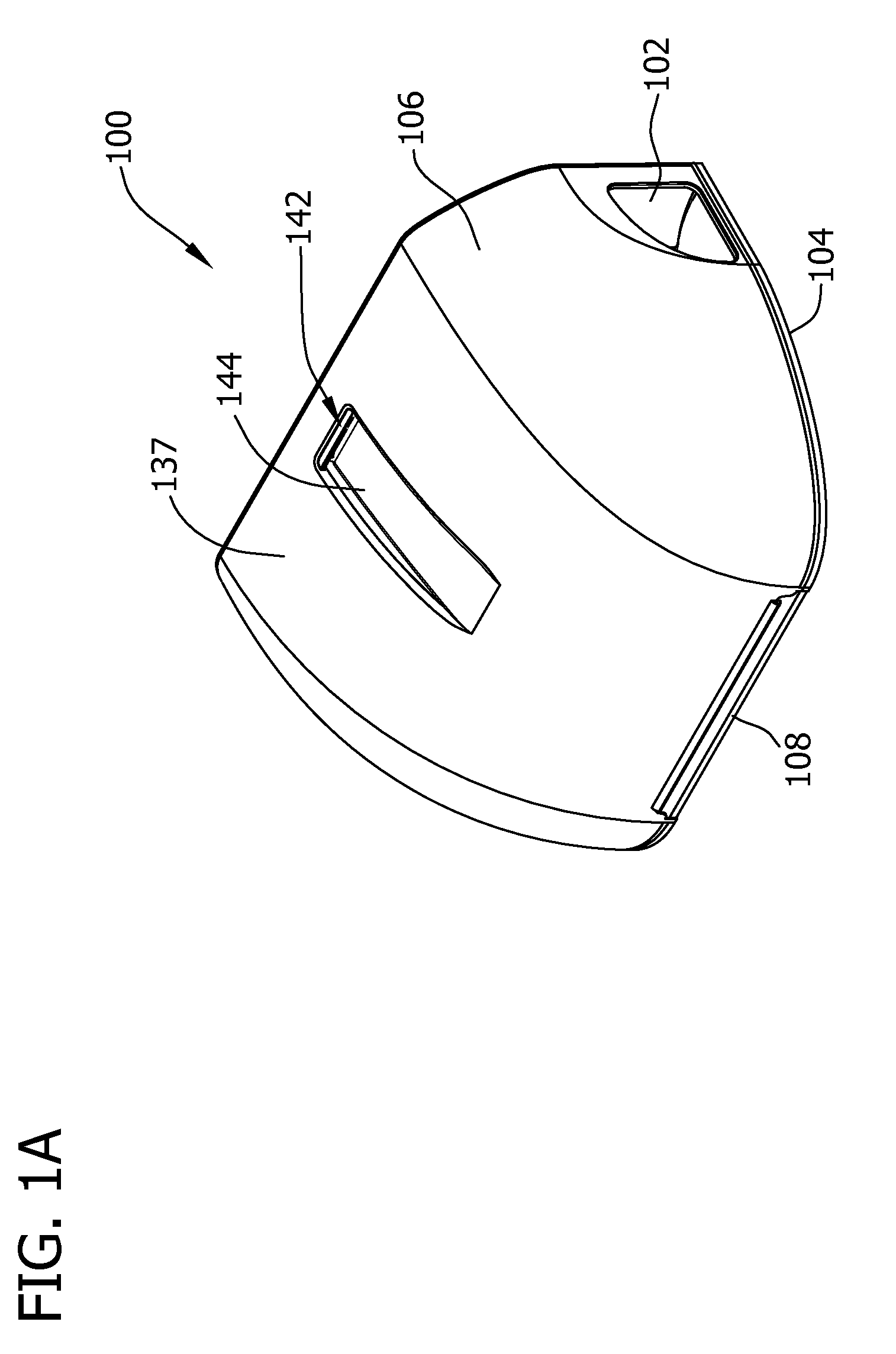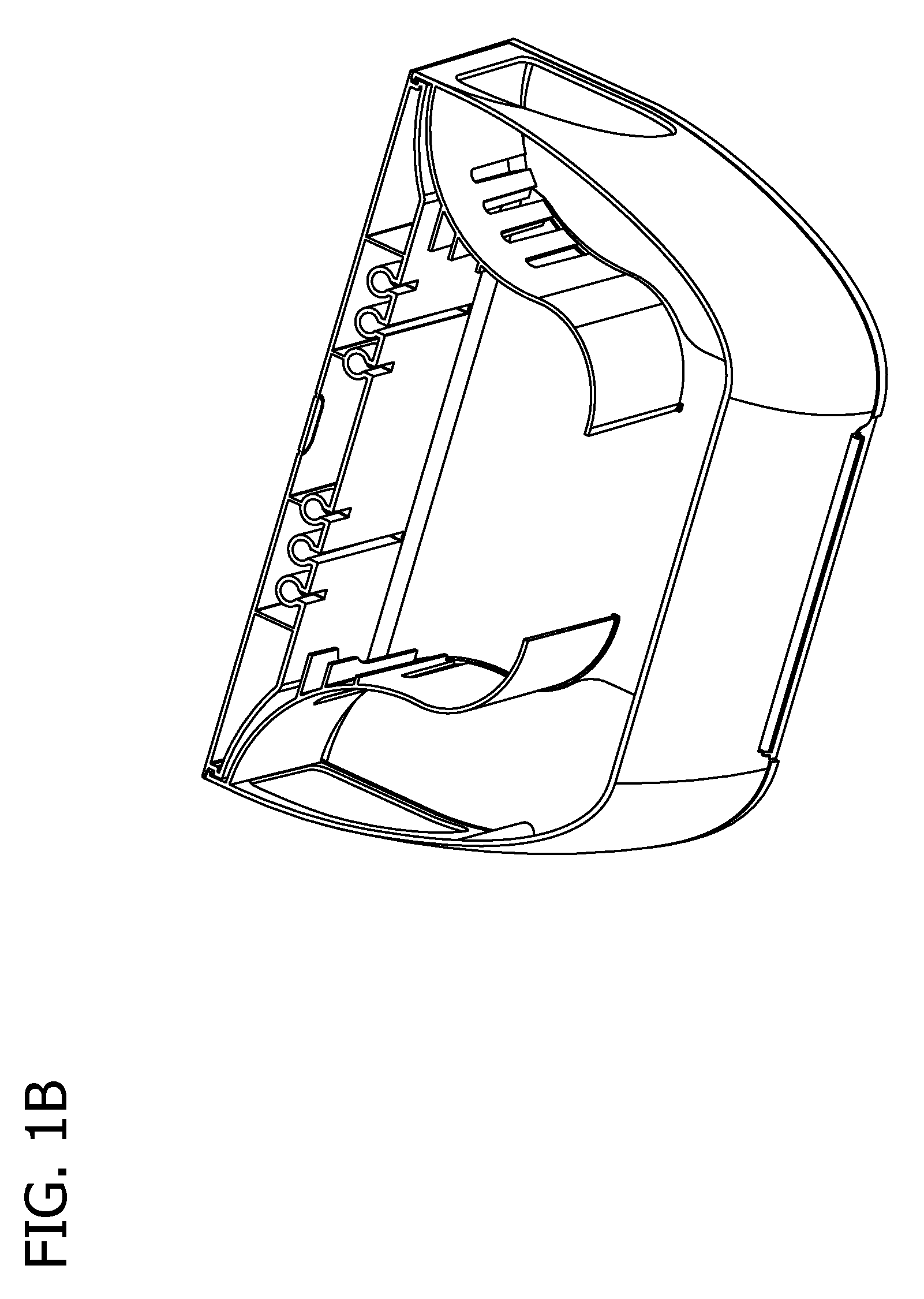Rodent management system having a housing with an entry opening
a management system and rodent technology, applied in the field of rodent management systems, can solve the problems of difficult or non-feasible reconfiguration, difficult and time-consuming removal of debris from prior systems, and inability to remove debris in a piecemeal fashion, etc., to achieve convenient reconfiguration of bait, easy to clean the station, and good weather resistance
- Summary
- Abstract
- Description
- Claims
- Application Information
AI Technical Summary
Benefits of technology
Problems solved by technology
Method used
Image
Examples
first embodiment
[0182]While not visible in the drawings, in some embodiments at least a portion of the inner surface 1118 of the bottom panel 1114 of the station 1100 housing (i.e., the floor of the housing) may be textured in the same manner as the inner surface 118 of the bottom panel 114 of the station 100 housing of the As illustrated in FIGS. 38 and 39, one or more demarcations 1111 may be provided on the inner surface 1118 of the bottom panel 1114 to indicate where the interior panels 1112 are located in the closed configuration of the station 1100. The demarcations 1111 facilitate proper alignment of the bait and traps within the bait chamber 1138 of the station 1100 housing to avoid interference with lid 1106 and in particular the interior panels 1112 upon closing the lid. The demarcations 1111 may be in any suitable form such as, without limitation, indicia, different coloring from the inner surface 1118 of the bottom panel 1114, labels, different texturing from the texture of the inner s...
second embodiment
[0183]The bait system and in particular the bait supports 1158 of the rodent management station 1100 of this embodiment are also different from the bait supports 158 of the previous station 100. Suitable bait support configurations for this second embodiment are illustrated in FIGS. 38-55, and in particular with respect to such supports for retaining bait blocks 1156 or other bait in generally vertical (e.g., stacked) configurations. It is understood, however, that the bait supports of this embodiment may also be configured to retain bait blocks 1156 or other bait in a general horizontal alignment as in the previous embodiment without departing from the scope of this invention.
[0184]As one example, with particular reference to FIG. 41, one suitable bait support 1158 is illustrated in the form of a bait tray 1322 having upstanding walls 1324 that extend upwardly from a horizontal bottom 1326 of the bait tray 1322 to form a trough 1330. A vertical wall 1328 is coupled to and extends u...
third embodiment
[0235]In addition to the differences in overall dimensions between the stations 100 and 300, the rodent management station 300 differs in one aspect from the previously described embodiments in that the bait is positioned differently within the station 300. For example, in this third embodiment bait is instead supported by bait support structure depending from the lid 306 above the bait chamber 338.
[0236]One or more bait supports 358 may be utilized for positioning and retaining bait within the bait chamber 338. FIGS. 85-89 illustrate two different types of exemplary bait supports 358. The bait supports 358 function in the same general manner and are coupled at one or both of their ends to the lid 306. The bait supports in turn pass through a hole in each of the bait blocks (or a hole in a single bait block) —the hole being centrally located in the bait block although the hole need not be centrally located to remain with the scope of the invention. It is also understood that the bai...
PUM
 Login to View More
Login to View More Abstract
Description
Claims
Application Information
 Login to View More
Login to View More - R&D
- Intellectual Property
- Life Sciences
- Materials
- Tech Scout
- Unparalleled Data Quality
- Higher Quality Content
- 60% Fewer Hallucinations
Browse by: Latest US Patents, China's latest patents, Technical Efficacy Thesaurus, Application Domain, Technology Topic, Popular Technical Reports.
© 2025 PatSnap. All rights reserved.Legal|Privacy policy|Modern Slavery Act Transparency Statement|Sitemap|About US| Contact US: help@patsnap.com



